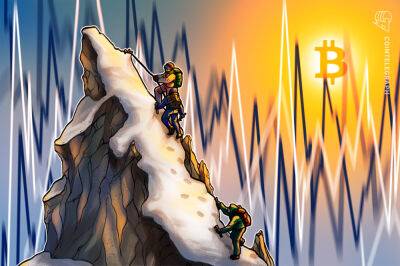Is Soaring US Inflation Rate Hurting Bitcoin's Revival Chances?
Key inflation data in the United States in June was just released by the Bureau of Labor Statistics on Wednesday, highlighting among many things that consumers are paying much more for basic necessities including food and gas.
Per the released data, the consumer price index (CPI) shot up by 9.1%, the highest since November 1981, surpassing the 8.6% recorded for the month of May. While the inflation rate as expected outgrow the estimates from the Dow Jones pegged at 8.8%, investors are responding with fright as many are unsure of where the Federal Reserve will tilt towards in its next FOMC meeting.
High-risk assets like Bitcoin (BTC) dropped by 3.38% immediately after the data were published with Ethereum (ETH) also dropping 4.49% within the same timeframe. For the better part of this year, Bitcoin has shown a very close correlation with key American indices like the Nasdaq Composite, and today’s fall can be tagged as the ripple effect in the plunge of the futures tied to both the Dow Jones, S&P 500 and the Nasdaq 100.
At the time of writing and according to data from CoinMarketCap, Bitcoin was changing hands at $19,784.25, before bouncing back above $20,000 level during the Asia Time trading section. Meanwhile, Ethereum was pegged at $1,086.56 before going back to above the $1100 level.
Where to go from here
It is very much likely that the digital currency ecosystem will continue to experience many headwinds as a result of the fallout in the global market for the rest of the year.
However, policymakers have two case scenarios when it comes to crypto’s response to the Fed action with respect to the soaring inflation.
One of the two that can back the long-term bullish thesis of Bitcoin and altcoin growth which economic
Read more on blockchain.news





![Vetle Lunde - Will Bitcoin [BTC] rise above its $23,000 level over weekend - ambcrypto.com - city Arrow](https://gocryptonft.com/storage/thumbs_400/img/2022/7/22/55469_jn2m.jpg)








![For Bitcoin [BTC] traders, next resistance level could be at… - ambcrypto.com](https://gocryptonft.com/storage/thumbs_400/img/2022/7/22/55281_l6go.jpg)




